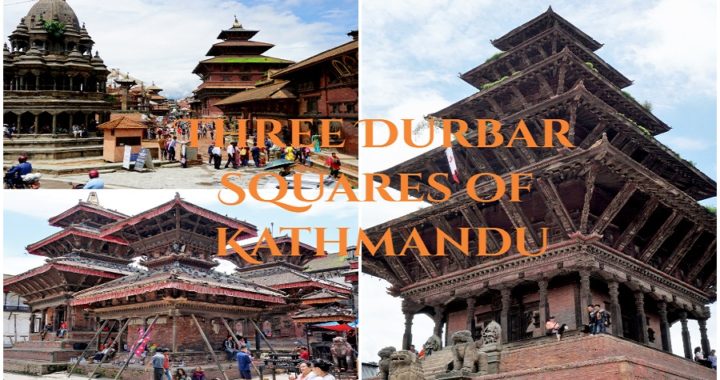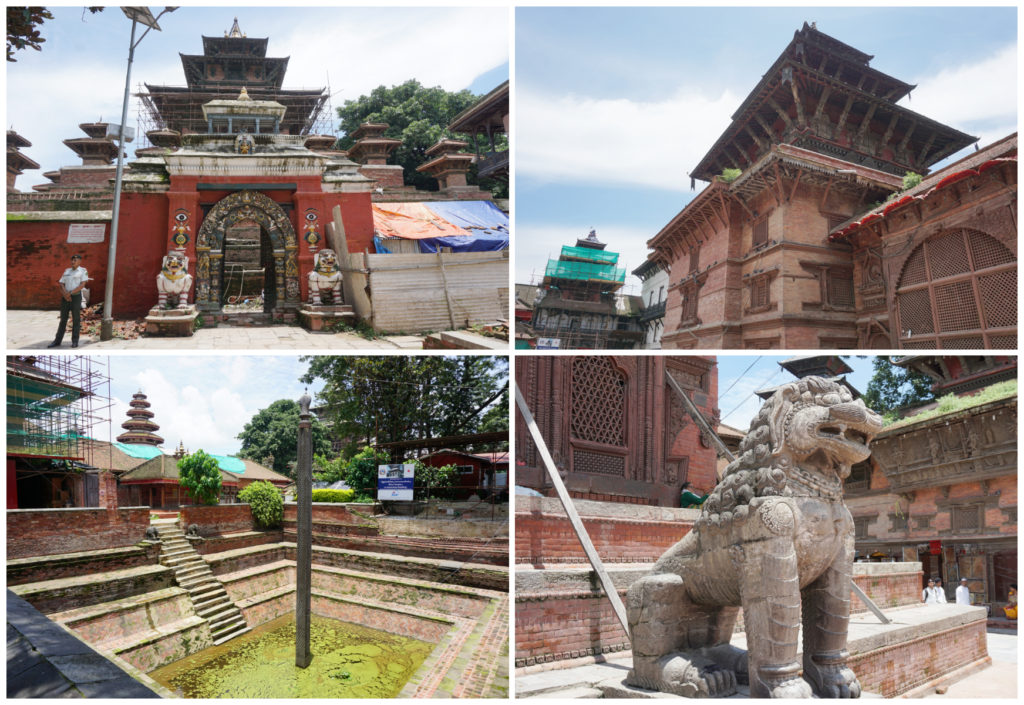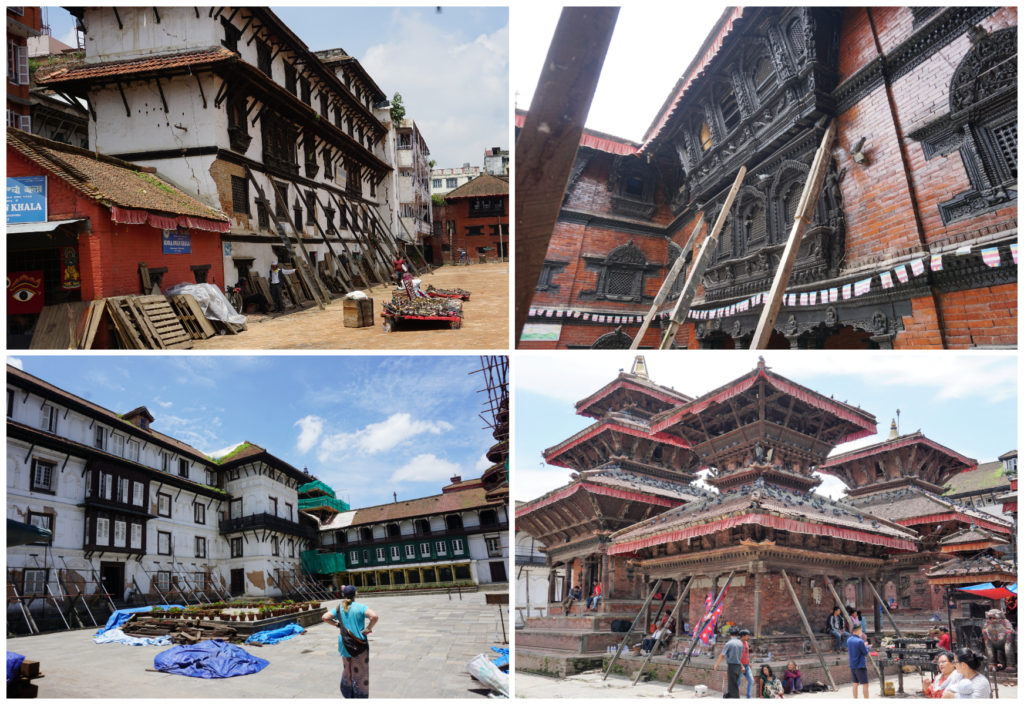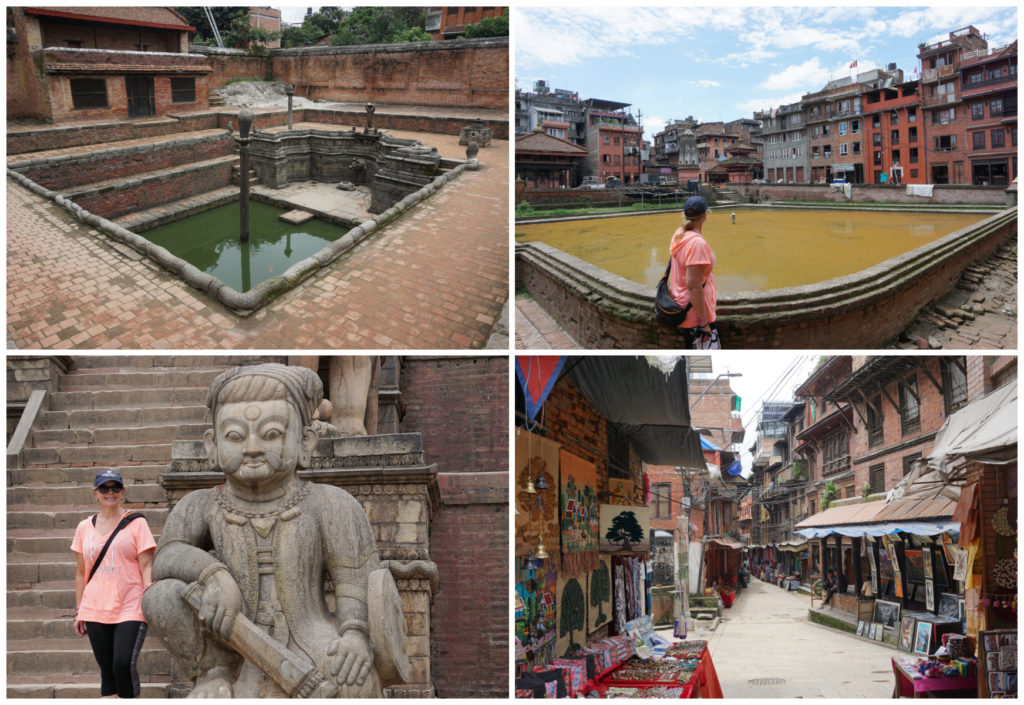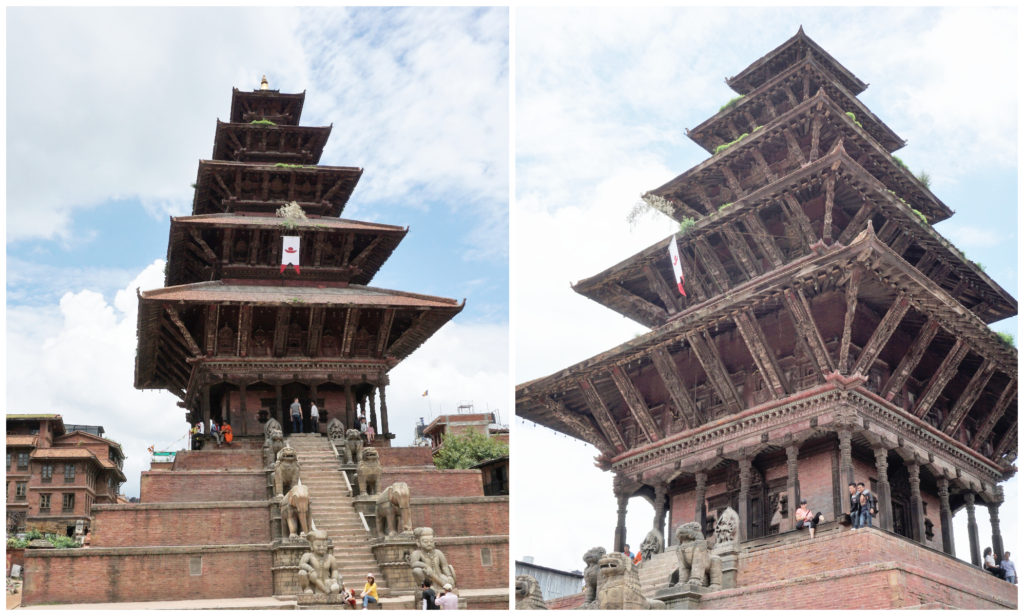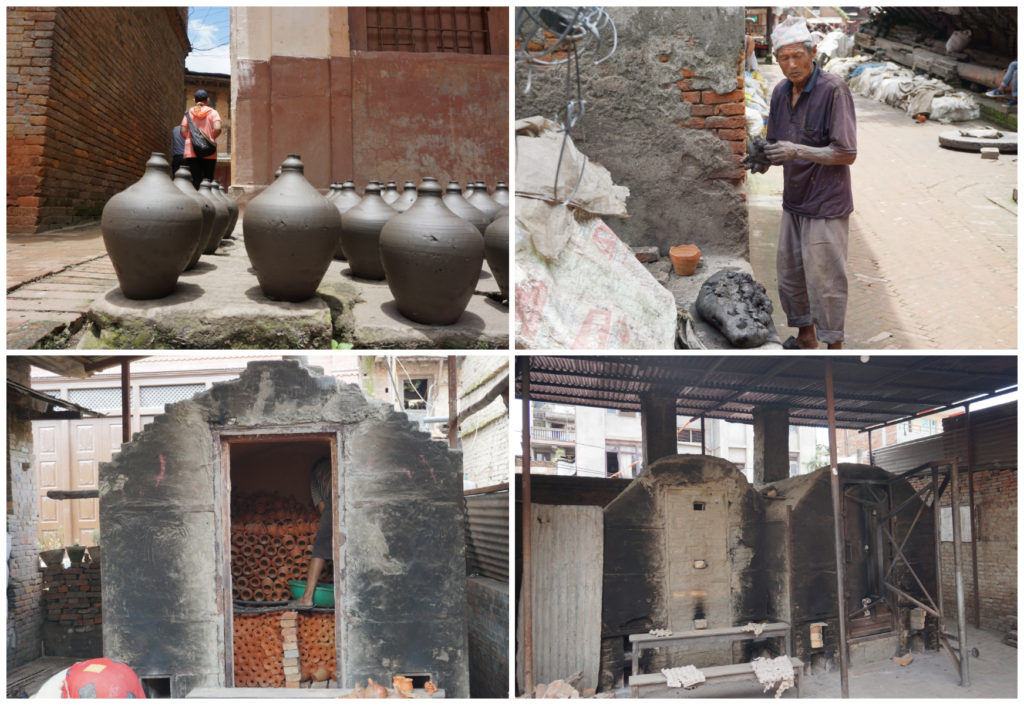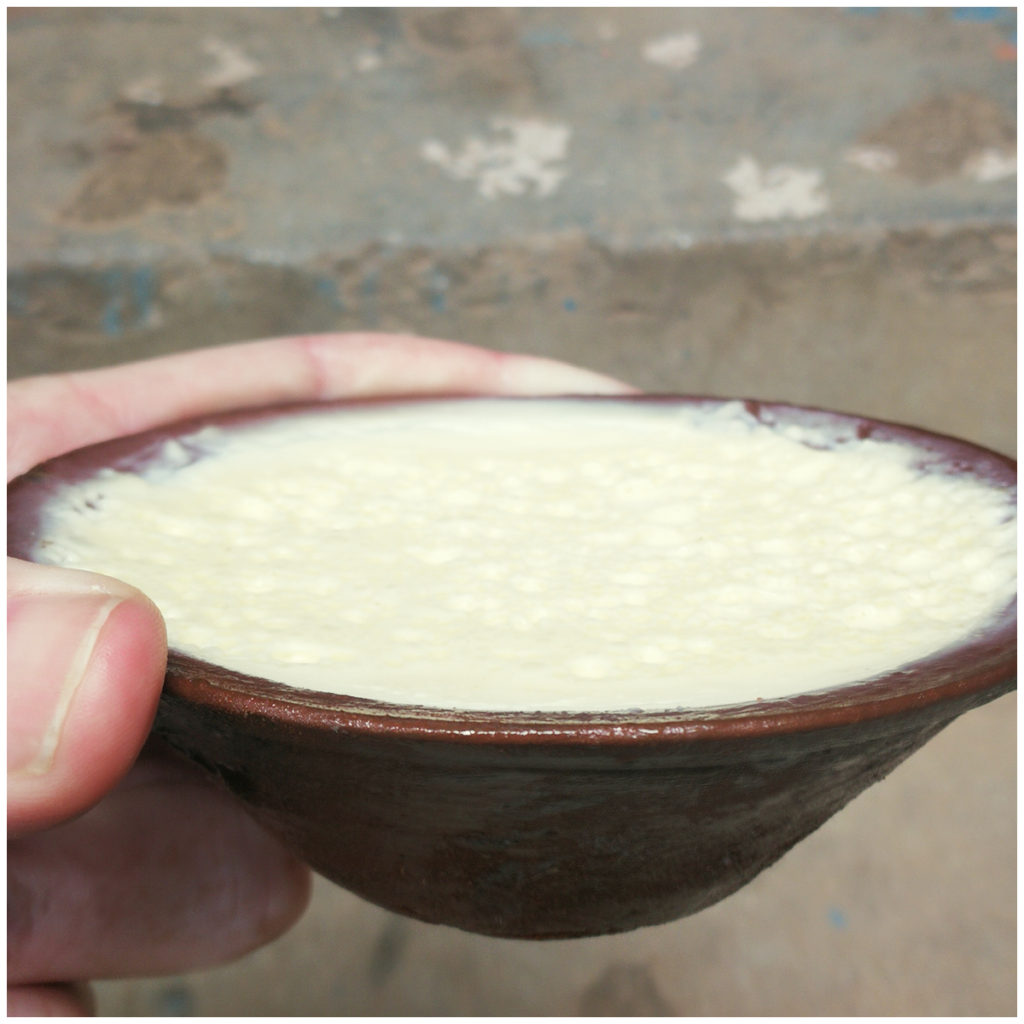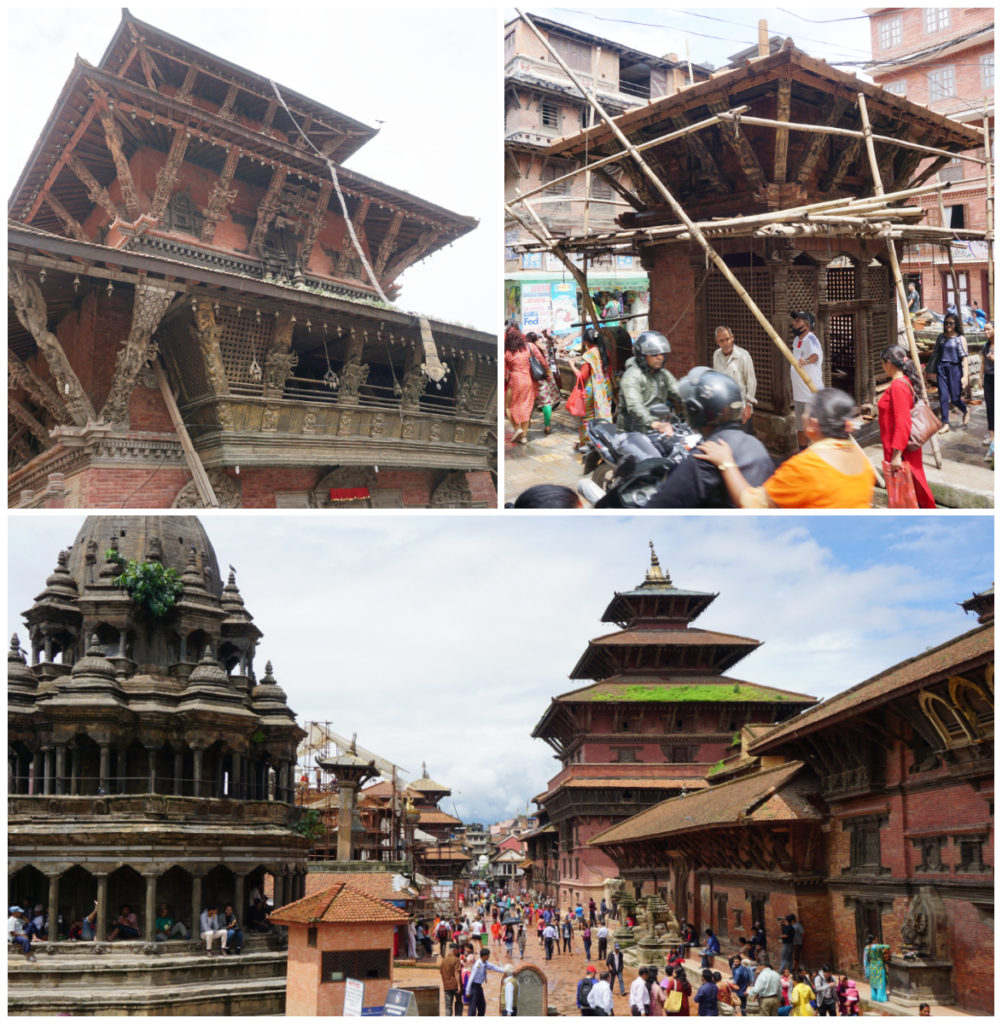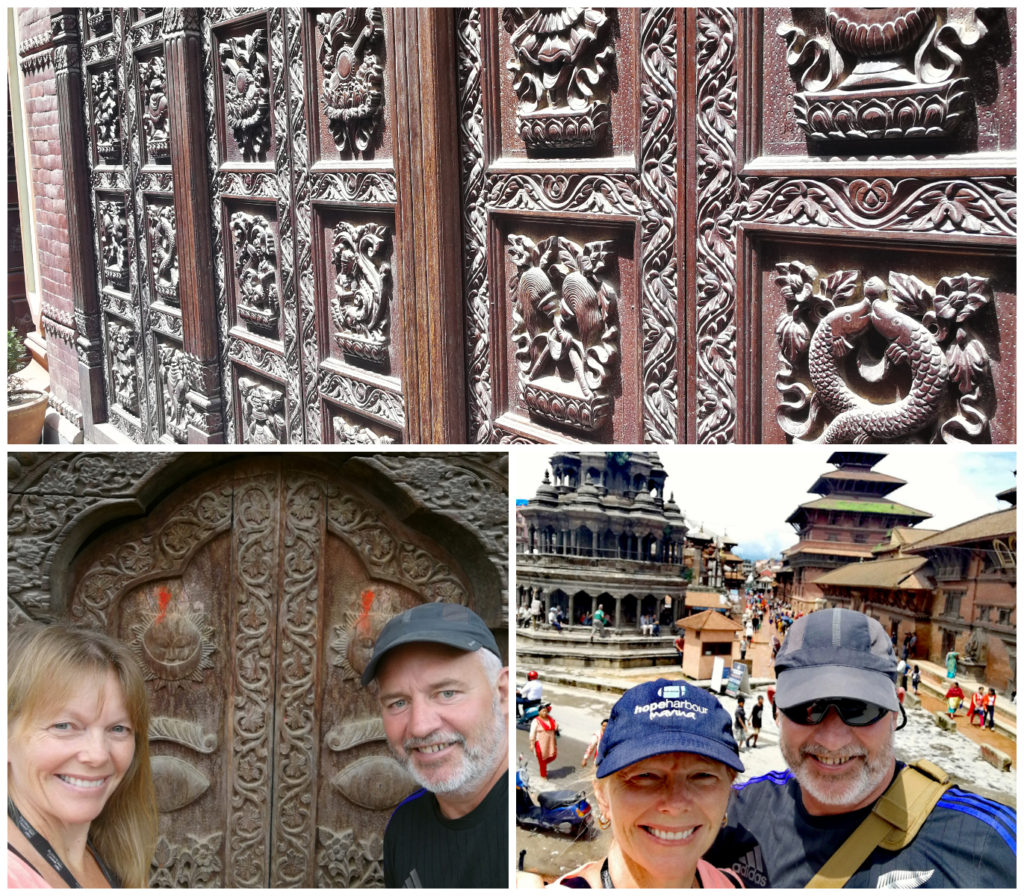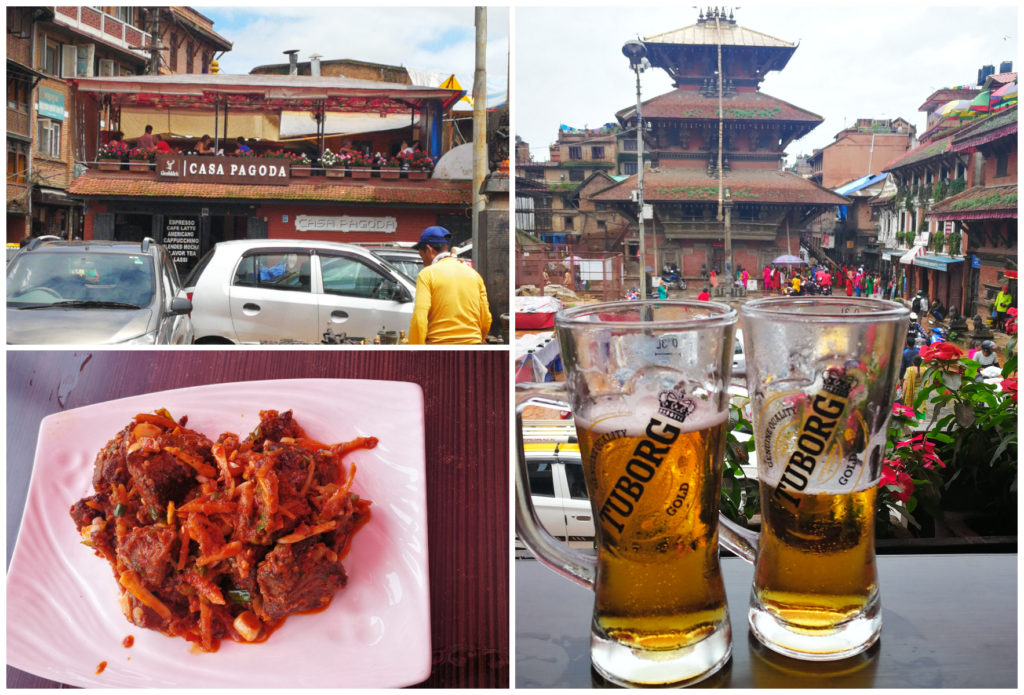While House/Pet Sitting in Kathmandu, we had the opportunity to get out and about around Kathmandu. Check out our House Sitting in Kathmandu blog.
Kathmandu Durbar Square (1)
While doing our research of the area, we discovered that there are actually three Durbar Squares in Kathmandu. Durbar Square is the generic name used to describe the areas opposite the old royal palaces in Nepal. The other two Dubar Squares are situated in Bhaktapur and Patan (see later in the blog).
All Durbar Squares consists of temples, idols, open squares, water fountains and public baths.
Entry Fee
We paid 1,000NPR/$13.60NZ each for our entry tickets. This is a one-off cost/single entry ticket. However, we could visit the Site Office with a passport photo and apply for multiple entries into the square for the length of our tourist visa. This is at no extra cost. Although we didn’t think we’d be returning, we went through the process and got our extended entry ticket.
Touts and Guides
We had read about the guides that will approach you, offering to be your guide around the Square. We politely declined their offers. Some persistent ones followed at length but we managed to lose them eventually.
We had the Lonely Planet Guidebook on loan from our host so we proceeded through and around the Square using the book as our guide.
Traditional Heart of the Town
Kathmandu’s Durbar Square was where the kings were once crowned and from where they ruled. It has the most spectacular traditional architecture we’ve seen and quite different from the temple and shrines of SE Asia.
The square bore the brunt of the 2015 earthquake and sustained substantial damage. Many of the temples collapsed, as did several towers in the palace complex. Reconstruction will continue for years to come although we could see where progress had been made.
Even though the Nepali royal family moved from the palace about a century ago, Durbar Square remains the tourist heart of Kathmandu.
We were surprised by the sheer number of temples surrounding the square and the two adjoining squares. Some structures date back to the 12th century.
Kumari Blessing
Built in 1757, Kumari Ghar is the home of the ‘Kumari’ or living Goddess. She is considered to be an incarnation of the Goddess Taleju. She lives a life of exile, not leaving the boundaries of this lavishly wooden decorated building.
We wandered inside the enclosed courtyard and we waited to receive a blessing from Kumari. There is strictly a ‘no photo or video’ rule and we were constantly reminded by the locals gathered there.
After about 15 minutes of gazing up at the decorated wooden bay window (apparently, she was having her lunch), a figure appeared. I don’t know why I expected to see an elderly lady standing there, but the Kumari is actually a 4-year-old. She was dressed in traditional clothing and had heavy eye makeup.
She clasped her hands in a prayer formation for about 10 seconds and then she was gone. The power of the Kumari is supposedly so strong that even a glimpse of her is believed to bring good fortune.
The current Kumari was chosen in 2017 after going through a rigorous selection process. Once ordained, her feet must never touch the ground outside of her palace. She is carried everywhere she needs to go for official functions. She remains Kumari until she reaches puberty when a new Kumari is found.
Earthquake Damage
Three years after the earthquake struck, Kathmandu Durbar Square still bears the reminders of the devastating quake.
Buildings are supported by poles, damaged statues and temples and workers clearing the debris of demolished structures.
Centuries-old buildings were destroyed in Durbar Square during the major quake and the following aftershocks. Nearly 9,000 people were killed and 22,000 injured across Kathmandu.
The area is showing signs that reconstruction of structures damaged by the quake is underway. Workers are mixing limestone with water, some are busy cleaning ‘reusable’ materials from debris like the ancient bricks from the original temples.
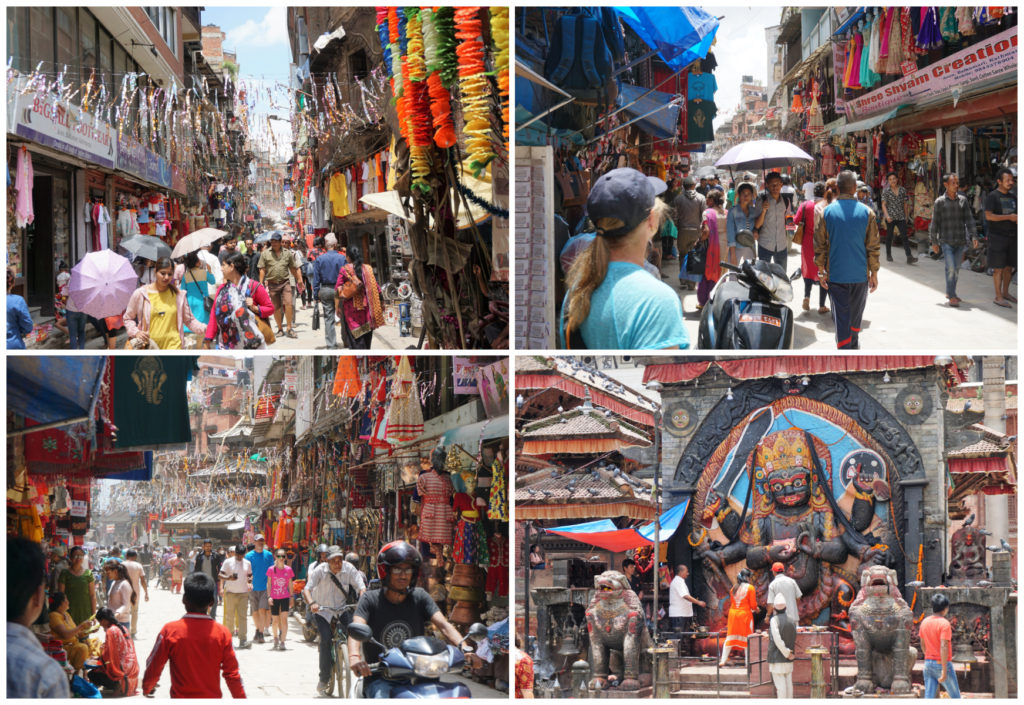
The chaos that surrounds Durbar Square. It’s noisy, dusty, dirty and crowded but so amazing at the same time.
Click on the link below for highlights of our walk around Kathmandu Dubar Square and surrounding area.
Bhaktapur Durbar Square (2)
Located approximately 13 km from the city centre it took us just on an hour for our driver to get us to Bhaktapur, which translated means ‘place of devotees’.
We were aware that it was more expensive to enter Bhaktapur Durbar Square than the Kathmandu Durbar Square. We paid our 1,500NPR/$20.50NZ each to enter the square.
Hiring a Guide
While we fobbed off the offers of a guide at the previous Kathmandu Durbar Square, we decided to splash out and pick a guide to show us around the historic square. This way we could learn about the history and understand the meanings behind the buildings.
We had a nice young man approach us. His name was Ram and he was polite and spoke good English. He was an Art and History student and had been guiding in the area for 8 years.
The initial price he quoted us was 2,000NPR/$27.30NZ for 2 hours. We bartered him down to 1,500/$20.50NZ. We figured it was for a good cause and supporting a local.
If you need the services of a guide and not comfortable about bartering or choosing one at the entrance, we would recommend Ram. His contact details are e-mai: ramnepali5599@gmail.com or phone +977-9861-990782.
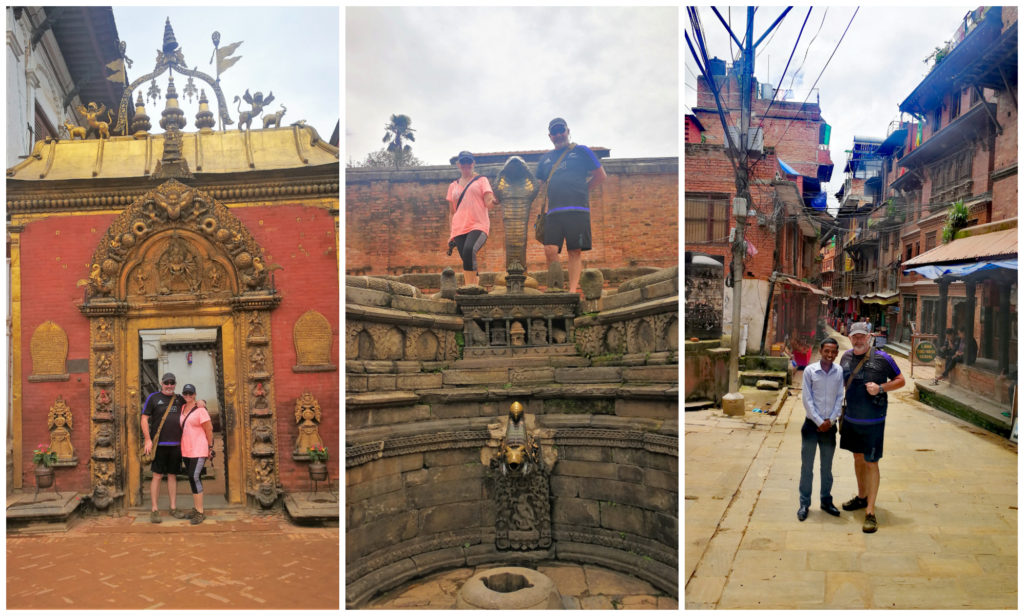
The Golden Gate built in 1753 (left) The Royal Bath behind the Palace (centre) Scotty with our guide Ram (right)
Easy Walking the Square
The square at Bhaktapur is completely closed off to vehicular traffic. It is famous for its many varied temples. The most impressive is the five-story Nyatapola Temple. This is the tallest temple in Nepal and was built in 1702. They must have done a great construction job as it survived the earthquake (unlike many other structures in the square).
We enjoyed seeing cultural life which is proudly on display. We wandered along narrow alleys, locals weaving cloth and carvers chiselling wood and stone products. The potters were busy moulding clay into pots and taking them to the numerous kilns on site in Potters Square. This has been used to produce all sorts of pottery goods for centuries.
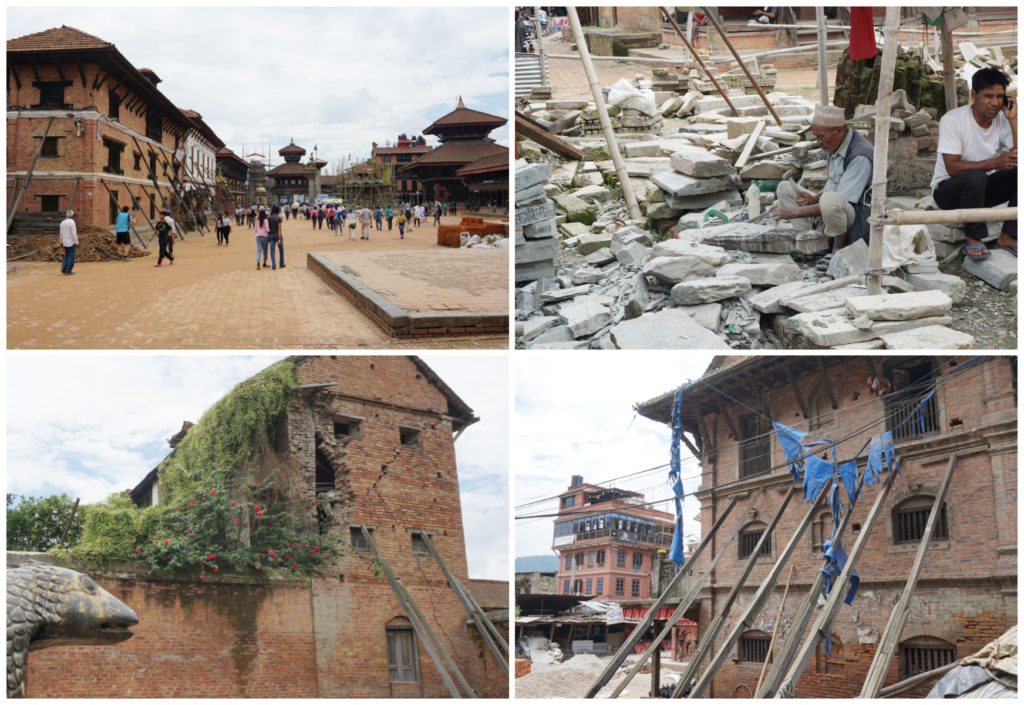
Like Dubar Kathmandu, there are scars of the earthquake everywhere and the reconstruction is slow and meticulous (top right)
No visit to Bhaktapur would be complete without another sample of the famous Juju (King of Curd) yoghurt in the traditional clay pot (see our blog on House Sitting in Kathmandu)
Click on the link below for a video on the highlights of our wander around Bhaktapur Dubar Square with our guide Ram.
Patan – Durbar Square (3)
Patan Durbar Square was the last of the three we visited.
Situated 8 km south of central Kathmandu it is situated on a plateau across the Bagmati River.
Patan has an ancient history, with the corners of the town being marked by stupas erected in around 250 BC. It is said that Patan has the greatest concentration of temples per square metre than either Kathmandu or Bhaktapur. There are more than 1,200 Buddhist monuments of various shapes and sizes scattered in and around this part of the city alone.
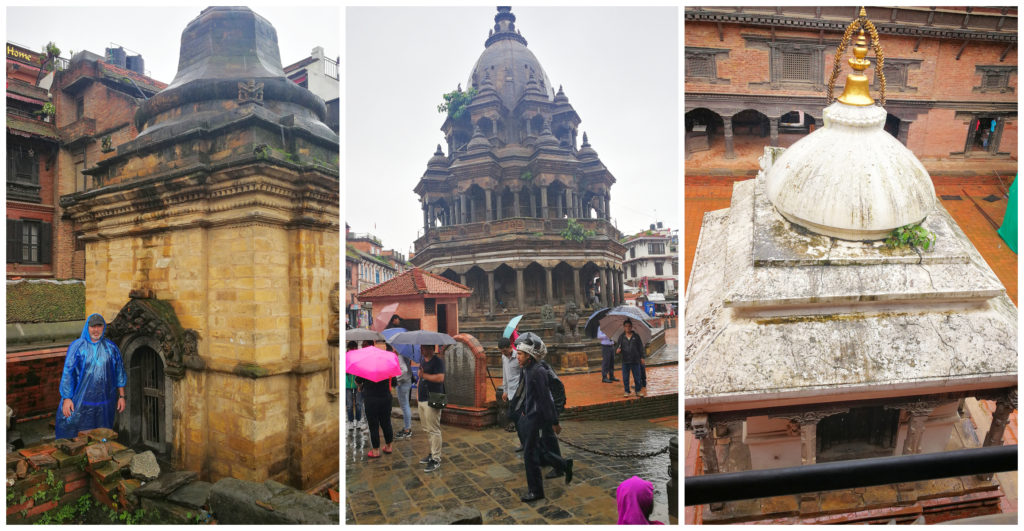
Trying to keep dry (left), Krishna Mandir built in the 17th century (centre), top of a stupa from the Patan Museum
Although Patan Durbar suffered the least damage from the 2015 earthquake some very important structures were reduced to rubble and to date has not been rebuilt. There is, however, a massive project of reconstruction going on and most of the more impressive temples were shrouded in a lot of scaffolding of some degree.
Although this made for poor photo opportunities, we still were in awe of the intricate woodwork and ancient architecture. Although the Patan Durbar Square has a long chequered history and has undergone many upheavals it is a great example of cultural heritage and finest craftsmanship.
Keeping Dry
It is the wet season so rain is to be expected. Wearing a poncho and having an umbrella kept us as dry as possible during the early showers and it was a great excuse to seek shelter in a lovely restaurant. We tucked into a local delicacy called Buff Chhoyala and of course our favourite Buff Momos. Our table on the 2nd floor was a great spot overlooking the square and we spent some time people watching and downing a couple of cold beers (just until the weather cleared of course!).
Click on the link to view our final video of our walkabout around Patan Durbar Square.
Summary of the Squares
If we had to pick a favourite out of the three squares, it would have to be Bhaktapur. If you only had time to do one, then this would be the Durbar Square to visit. This is purely on our perspective based on spending similar amounts of time in each.
